Archives Hub feature for February 2017
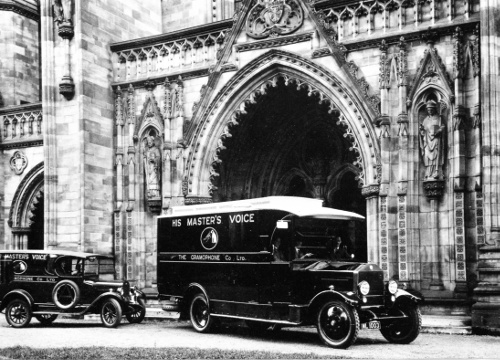
THE FOUNDING OF THE ARCHIVE
The first gramophone records went on sale in England 120 years ago and five years later, in 1902, the first ever gramophone record by an English robed choir of gentlemen and boys was issued. Since then many thousands of recordings of our choirs have been produced and they represent a unique and priceless recorded legacy of these choirs, which are woven into the very fabric of our cultural and musical heritage.
For a country which takes such care of all aspects of its heritage, this is one area which has been woefully neglected and even the National Sound Archives contains only a small selection.
Having spent a lifetime associated with church music and choirs, I decided to start researching and collecting recordings. As this had never been undertaken there were no discographies to consult and in many instances the choirs themselves had only scant information on what they had recorded over the years.
After fifteen years of collecting and research the Archive of Recorded Church Music is acknowledged to be the definitive collection of recordings worldwide and acquisitions are constantly being added as more and more treasures are discovered.
THE RAISON D’ETRE OF THE ARCHIVE
The Archive seeks to preserve this cultural heritage for future generations from the very first gramophone record in 1902 to the latest new releases. The recordings in the Archive are ‘from choirs of gentlemen and boys singing in the English Cathedral tradition’ both Anglican and Roman Catholic, from Cathedrals, Abbeys and Minsters, Parish churches, Royal Peculiars (such as the Chapel Royal) Oxbridge chapel choirs, School chapel choirs and independent choirs.

This uniquely English tradition became the blue print for Anglican & RC choirs abroad, mainly in Canada, the USA, New Zealand and Australia and the Archive contains a representative selection of recordings from these ‘English’ foreign choirs.
THE RECORDINGS IN THE ARCHIVE
Every category of recording is represented in the Archive, whether it be a commercial issue from a major record company or a smaller independent company; or an in-house recordings issued by the choir themselves for limited sale in their surrounding area; or a private recording of which only that one copy exists. Each category contains recordings on 78rpm records, reel-to-reel tapes and cassettes, mini-discs, vinyl records and CDs.
Commercial issues: From 1902 to the present day, every commercial issue is listed in the Archive’s Discography with over 95% being in the collection; the remaining 10% are still to be tracked down. Many small independent labels over the years have specialized in choir recordings and these form a substantial part of the collection.
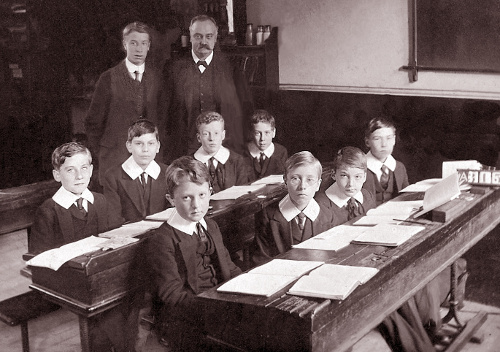
Listen to the very first choir record, issued by the Gramophone Company (the forerunner of EMI) in 1902 of the choir of St Andrew’s, Wells Street in London by clicking here: http://www.recordedchurchmusic.org/first-choir-to-record.
Of the numerous smaller independent companies specializing in choir recordings, Abbey/Alpha was one of the most famous, owned by Harry Mudd, OBE. Listen to one of his vinyl records from the choir of All Saints, Margaret Street in London, a choir of legendary status in the history of church music: https://youtu.be/UBgki4dGicc?list=PLEv7ZfArXoUm9-1GkoVpHpMbVlzNbt5Om.
In-house recordings: These were commissioned by the choir themselves and usually on sale only in the local area, so therefore more difficult to discover. The Archive contains thousands of these recordings on every format and many of these choirs are now long gone, their legacy being their recording.
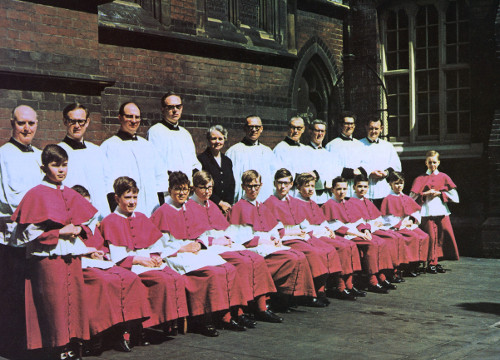
As these recordings were commissioned by the choirs themselves they give an excellent representation of the different types of choirs and of choirs which would not have otherwise recorded.
The Chapel Choir of the Royal Wanstead School was in its heyday a particularly fine example of this genre and produced some in-house recordings on 78rpm records. Listen to the choir and two of their finest chorister soloists singing: http://www.recordedchurchmusic.org/historic-recordings/royal-wanstead.
Private recordings: Some of the rarest gems in the Archive are one-off copies of private recordings which were usually made by the choirmaster himself or an enthusiastic amateur. Some choirs are represented with a large archive of these recordings but for many it’s the only recording of that choir in existence and many of the private recordings are of choirs which no longer exist.
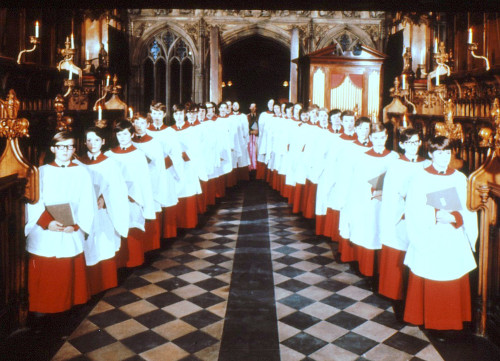
One of the choirs for which we have a large collection of private recordings is Magdalen College Oxford, under the legendary Bernard Rose. This particular recording is of Stanford’s Magnificat in C and Rose recalls Sir Walter Alcock, a friend of the composer, telling him of Stanford’s puzzlement at the speed at which most choirmasters took the Magnificat. In Rose’s and Alcock’s view, this is the speed Stanford wishes it to be sung: https://youtu.be/MHgjuhp74w8.
RADIO & TV BROADCASTS
A major part of the Archive consists of Radio and TV broadcasts which represent an important part of this choral heritage. The broadcasts consist of services, concerts, recitals and documentaries on choirs and church music and are in particular danger of being lost for ever, as tapes were regularly wiped by the broadcasting company to save space.
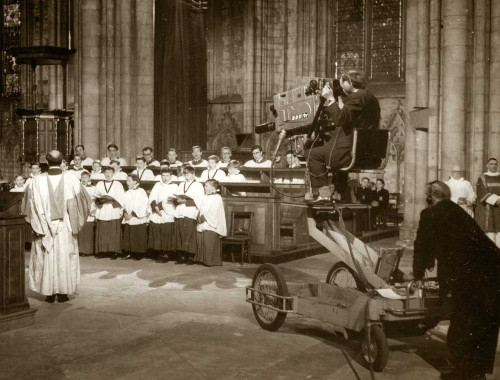
This is especially true of BBC Choral Evensong broadcasts as the BBC has no broadcasts from before 1990. Over the years the Archive has gathered up almost 2000 Evensong broadcasts which provide a fascinating snapshot of the choir under the Director of Music at that moment in history. We regularly upload archive radio broadcasts and BBC Choral Evensong broadcasts to our Youtube channel at: https://www.youtube.com/c/archiveofrecordedchurchmusic.
LIBRARY AND PHOTOGRAPHIC ARCHIVE
This complimentary collection has developed over the years with many thousands of photographs, newspaper and magazine articles, books; in fact, anything relating to choirs, choir schools and choristers and often provides invaluable background information to the recordings.
Visitors are always welcome to come and browse the archive and should you have any recordings of interest, please do get in touch and help the preserve this unique and priceless recorded heritage: www.recordedchurchmusic.org.
Colin Brownlee
Archive of Recorded Church Music
All images copyright the Archive of Recorded Church Music and reproduced with the kind permission of the copyright holder.
